
Under the Whyte notation for the classification of locomotives, 4-6-4 represents the wheel arrangement of four leading wheels, six powered and coupled driving wheels and four trailing wheels. In France where the type was first used, it is known as the Baltic while it became known as the Hudson in most of North America.

Établissements Billard was a French railway rolling stock construction company founded in 1920 and based in Tours. It specialised in light railbuses and metre gauge and narrow gauge rolling stock. The business ceased trading in 1956 and later became Socofer.
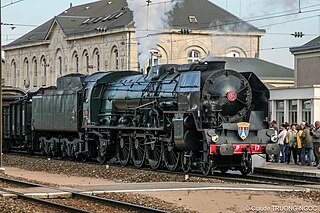
The SNCF 241.P is a 4-8-2 'Mountain' type express passenger steam locomotive that ran on the Société Nationale des Chemins de fer Français, from 1948 until 1973. Introduced as large scale electrification of the SNCF was already underway, they were the last new class of passenger steam locomotives in France.

Nord 3.1201 to 3.1290 was a class of 90 Pacific (4-6-2) type steam locomotive of the Chemins de Fer du Nord. They served in the north of France and Belgium. The first batch were built in 1923, and last remaining were retired from service in the 1960s. These locomotives were widely known as "Superpacifics" due to their high performance, which made them famous even in Britain.
Jean-Jacques Meyer (1805–1877) was a French engineer, noted for his work with steam engines and steam locomotives.
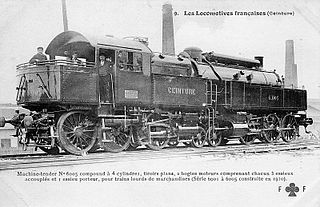
The du Bousquet locomotive was an unusual design of articulated steam locomotive invented by French locomotive designer Gaston du Bousquet. The design was a tank locomotive, carrying all its fuel and water on board the locomotive proper, and a compound locomotive. The boiler and superstructure were supported upon two swivelling trucks, in a manner similar to a Meyer locomotive.
Gaston du Bousquet (1839–1910) was a French engineer who was Chief of Motive Power of the Chemin de Fer du Nord, designer of locomotives and professor at École centrale de Lille.

État 3701 to 3755 were a series of 4-6-0 de Glenn compound steam locomotives of the Chemins de fer de l'État built between 1901 and 1909.
Nord 5.1201 to 5.1230 were a class of 2-10-0 “Decapod” steam locomotives of the Chemins de Fer du Nord, designed to handle heavy coal trains. On 1 January 1938, they all passed to the SNCF, who numbered them 2-150.B.1 to 30.
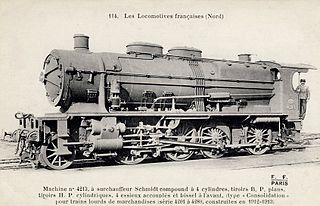
Nord 4.061 to 4.340 were a class of 2-8-0 tender goods locomotives of the Chemins de fer du Nord. At nationalisation on 1 January 1938, they all passed to the SNCF who renumbered them 2-140.A.1 to 2-140.A.280.

Nord 2.231 à 2.305 were suburban 4-4-4T locomotives of the Chemins de Fer du Nord. They were nicknamed "Revolver" due to the appearance of the high-pitched small diameter boilers next to the low water tanks and cabs,

SNCF 232.P.1 was an experimental prototype high-pressure steam locomotive ordered by the Chemins de fer du Nord, but delivered to the Société nationale des chemins de fer français (SNCF) in 1939. It was the first and only member of SNCF's first class of 4-6-4 or Hudson type of locomotives.

SNCF 150.P were a class of 2-10-0 “Decapod” steam locomotives built as standard locomotives of the newly created Société Nationale des Chemins de fer Français (SNCF) between April 1940 and April 1950

Ceinture 81 to 93 were a class of thirteen 4-6-4T ("Baltic") tank locomotives designed by Gaston du Bousquet of the Chemins de fer du Nord for the Syndicat d'Exploitation des Chemins de fer de Ceinture de Paris.

Ceinture 51 to 65 were a class of fifteen 4-6-0T locomotives built in 1902 for the Syndicat d'Exploitation des Chemins de fer de Ceinture de Paris. They passed to the Chemins de fer du Nord in 1934 who renumbered them Nord 3.701 to 3.715. In 1938 they passed to the SNCF who renumbered them 230.TA.1 to 230.TA.6.
The SNCF 232.Q.1 was an experimental prototype steam locomotive of the Société nationale des chemins de fer français (SNCF) which entered service in 1940. It was Baltic or 4-6-4 locomotive.
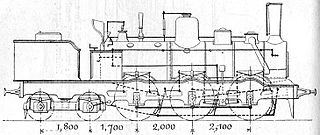
Nord 3.021 to 3.075 were 0-6-4 tank locomotives for mixed traffic of the Chemins de Fer du Nord.

The Nord 2.821 to 2.911 and 2.201 to 2.212, also referred to as Outrances, was a series of French 2-4-0 and 4-4-0 express passenger locomotives of the Chemins de Fer du Nord.

Est 501 to 562 was a class of 62 French 2-4-0 locomotives for express passenger service, built in 1878–1886 for the Chemins de fer de l'Est.
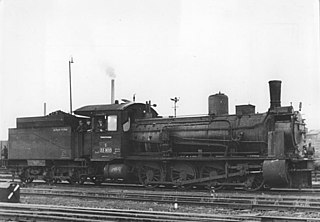
The Prussian G 7.2 was a class of 0-8-0 tender compound locomotives of the Prussian state railways. In the 1925 renumbering plan of Deutsche Reichsbahn, the former Prussian locomotives produced from 1895 to 1911 were given the class designation 55.7–13; while the locomotives of former Mecklenburgische Friedrich-Franz-Eisenbahn (MFFE) locomotives were classified as 55.57.

















